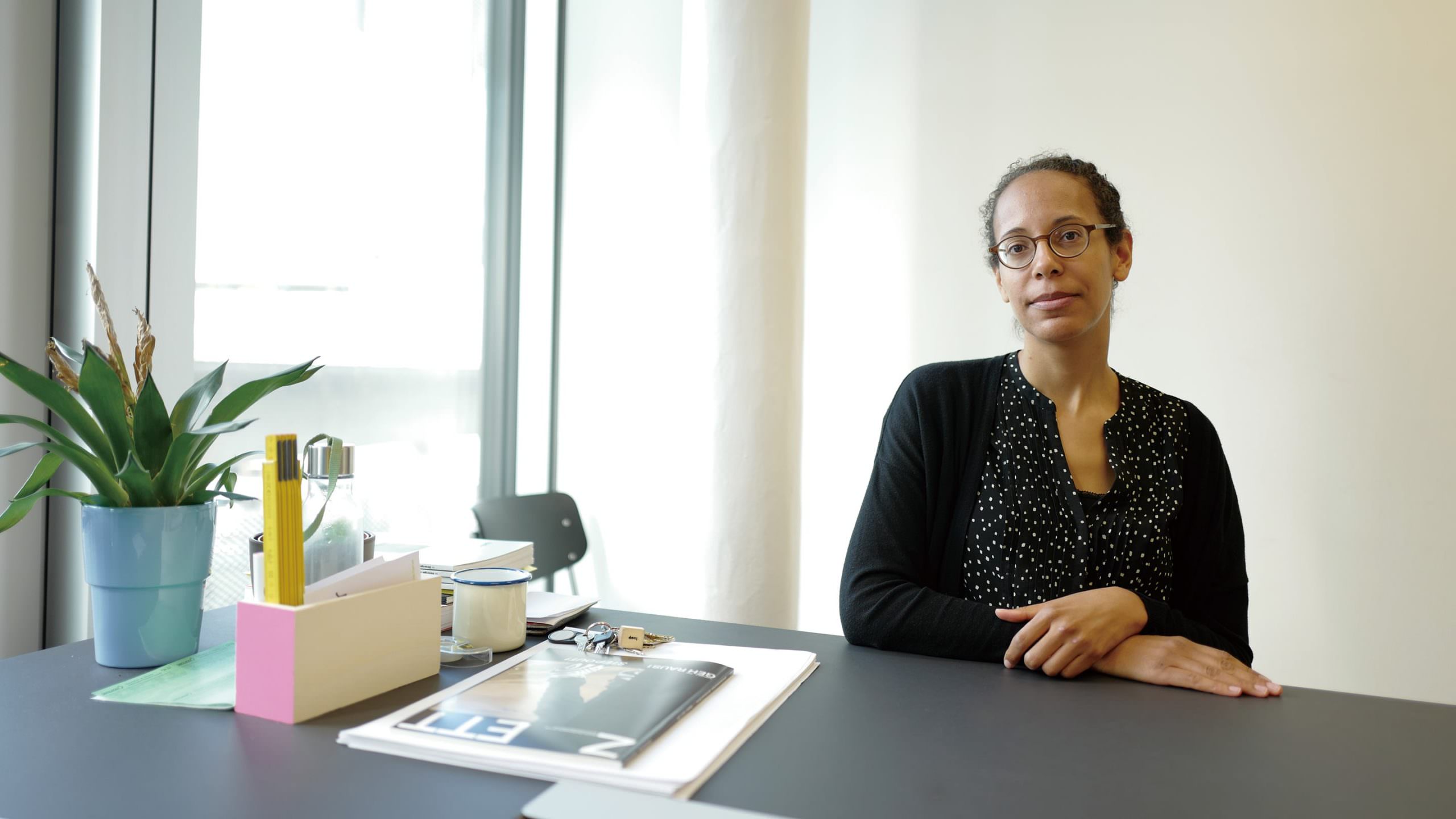Zurich University of the Arts
チューリッヒ芸術大学
簡単に自己紹介をお願いします。
Could you please tell me a little bit about yourself?
ヴィジュアルコミュニケーション学部の教授であり、同分野の研究者であり、教育者です。ドイツでコミュニケーションデザインを勉強し、出版社で数年勤務した後、ロンドンのロイヤル・カレッジ・オブ・アートでデザイン史の修士課程に進みました。その後に教職につきましたが、働きながら、レディング大学でタイポグラフィとグラフィックコミュニケーションの博士課程を修めました。
チューリッヒ芸術大学(以下:ZHdK)では、継続教育課程(義務教育終了後の成人向けの教育プログラム)と共に学部と修士課程を教えています。新しいカリキュラムと教育のフォーマット策定の責任者でもあります。ヴィジュアルコミュニケーションのリサーチ部長として、リサーチプロジェクトや他大学との協業を展開し、博士課程の学生を指導しています。
学生が複合的なコミュニケーションの需要により効果的にアプローチできるように、数年をかけて学習プログラムの領域を広げ続けています。当校はヴィジュアルコミュニケーションを対話として捉え、社会的、政治的、文化的発展に関与し、応用しています。私たちのリサーチの目的は、デザイン領域における潜在的な知識を、新しい知識や方法を生み出すために前景化させることです。
I am Professor of Visual Communication and direct research and teaching in this area. I studied communication design in Germany, and
after a few years of working for publishing houses pursued a Master’s degree in History of Design at the Royal College of Art in London. After my MA degree I started teaching and completed a Ph.D. in Typography and Graphic Communication at the University of Reading.
In Zurich I teach at the BA and MA level, as well as further education. I’m also responsible for developing new curricula and educational formats. As head of research in Visual Communication, I initiate research projects and collaborations with other universities and supervise Ph.D. students.
In recent years I have been broadening the scope of our study programs to enable students to approach the demands of complex communication more effectively. We see visual communication as dialog and engage with and respond to social, political and cultural developments. Our research aims to make implicit knowledge within our field tangible to produce new knowledge and methods.
ZHdKは「Internal Project Funding」という非常に興味深いプロジェクト提案の公募をされていました。具体的に教えてください。
ZHdK called for proposals as “Internal Project Funding”, which is very interesting. Could you please explain the details of the project?
学部内にデザイン領域における全てのリサーチの試みを統合するデザイン研究所があります。全デザイン領域から集まる代表者や研究者で構成されます。「Internal Project Funding」の公募は、研究者、アシスタントや大学院生が、自分たちのリサーチプロジェクトに着手し、継続することを支援できるようにするための研究所のツールなのです。たとえば、選任された修士課程の学生が卒業後に数か月がかりのプロジェクトを手がけ、博士課程の提案や第三者機関の助成申請に発展させたりします。研究者やアシスタントは、第三者機関の助成申請、または小規模プロジェクト、フィールドワーク、実験または試験に備え、予備研究のためにその資金を使うことができるのです。公募は各年で募集され、継続的に成功を収めています。
We have a design research institute within our department that integrates all research endeavors within the design disciplines. It consists of representatives and researchers from all design subject areas. The call for internal project funding is a tool of the institute to support research associates, assistants and graduates in initiating and pursuing their own research projects. One possible way, for instance, is that selected MA graduates work with us for several months after their studies and develop a PhD proposal and/or third-party funding application. Research associates and assistants can use the funding for pilot studies in preparation for third-party funding applications, or for small-scale projects, fieldwork, experiments or testing. The call is launched each year and has been very successful.
学内で行われる学生展の準備のプロセスについてお教えください。
Could you tell me about the processes involved in preparing a student show?
大学側は卒業制作展が卒業生のキャリアの足がかりとなることを承知しているので、事前に数か月かけて準備をします。学内の展示と出版物、デジタルのショーケースをセットで制作しています。通常、大学のコース内容に忠実な展示コンセプトがありますが、学生各自のプロジェクトを柔軟に受け入れています。また、ウェブサイトから、ポスター、印刷物、デジタルアプリまで、幅広いメディアや複数のプラットフォームを考慮しなければなりません。様々なメディアやインタラクティヴなコミュニケーションを必要とする学生のプロジェクトもあります。舞台のパフォーマンス、インスタレーションや上映の形態をとる学生プロジェクトもあります。卒展には多くの観客が訪れます。入学見込みの学生、友人、家族、卒業生も多く訪れますが、デザイン業界やパートナー企業の代表者も来場します。
Our graduate shows are planned months in advance since we know they are a career stepping stone for our graduates. We pair the in-house show with a publication and digital showcase. We usually have a strict exhibition concept that provides a cohesive identity for our study programs, but we also try to allow flexibility for the individual student projects.
Also, we have to consider multiple media and formats, ranging from websites to posters to printed publications to digital apps. Some student projects communicate through a mix of various media or require interactive features. Other students stage performances or set up installations and screenings. The show opening usually draws a large audience — these are often prospective students, friends, family and alumni, but also representatives from the design industry or collaboration partners.
卒展のデザインコンセプトやディレクションは誰が決めるのでしょうか? 展示全体をデザインするのは誰なのでしょうか?
Could you tell me who decides the design concept and design direction? Who designs the whole show?
過去には舞台美術専門のデザイナーに依頼し、卒展のデザインコンセプトを作ってもらったこともありました。ですが、近年は、内製で卒展のコンセプトとディレクションをするように変更しました。現在は、ヴィジュアルコミュニケーション学部の各コース長、アシスタント、学生たちが協力したキュレーション体制をとっています。
We have in the past hired scenographers to create a design concept for our degree shows. Recently, however, we have shifted the conception and direction of the show in-house: it is now a concerted curatorial effort between the program heads, the assistants and the students within Visual Communication.
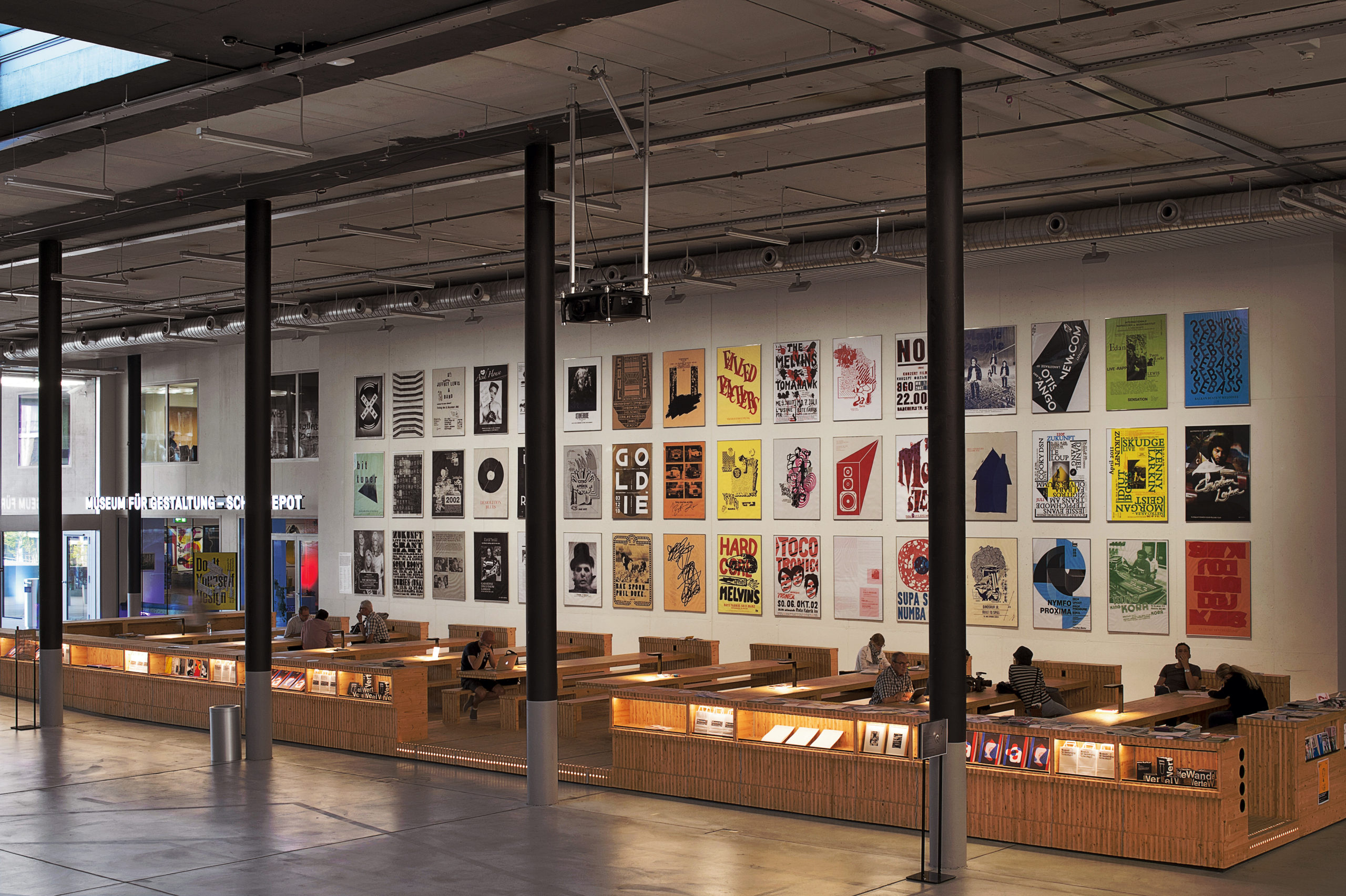
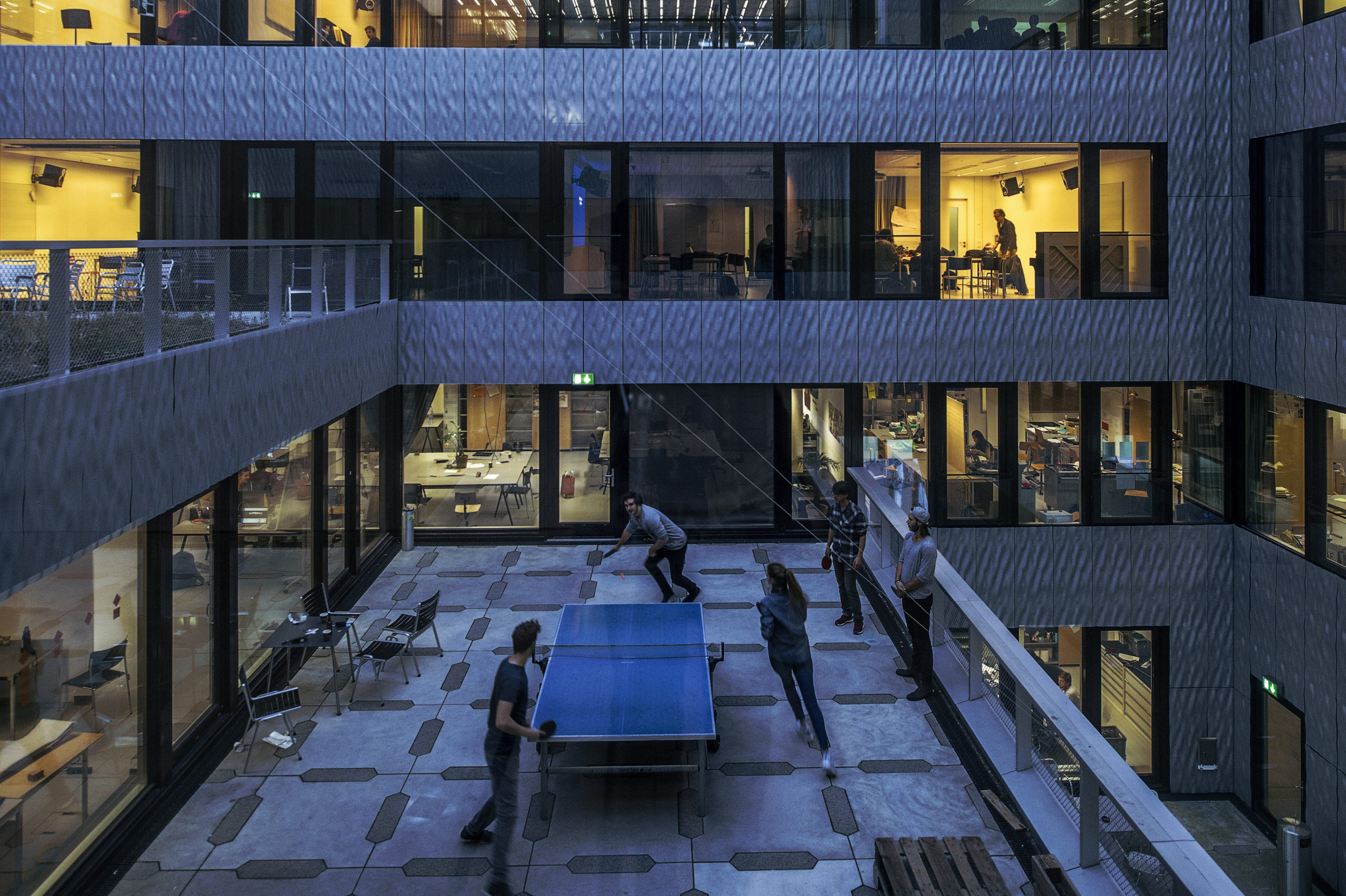
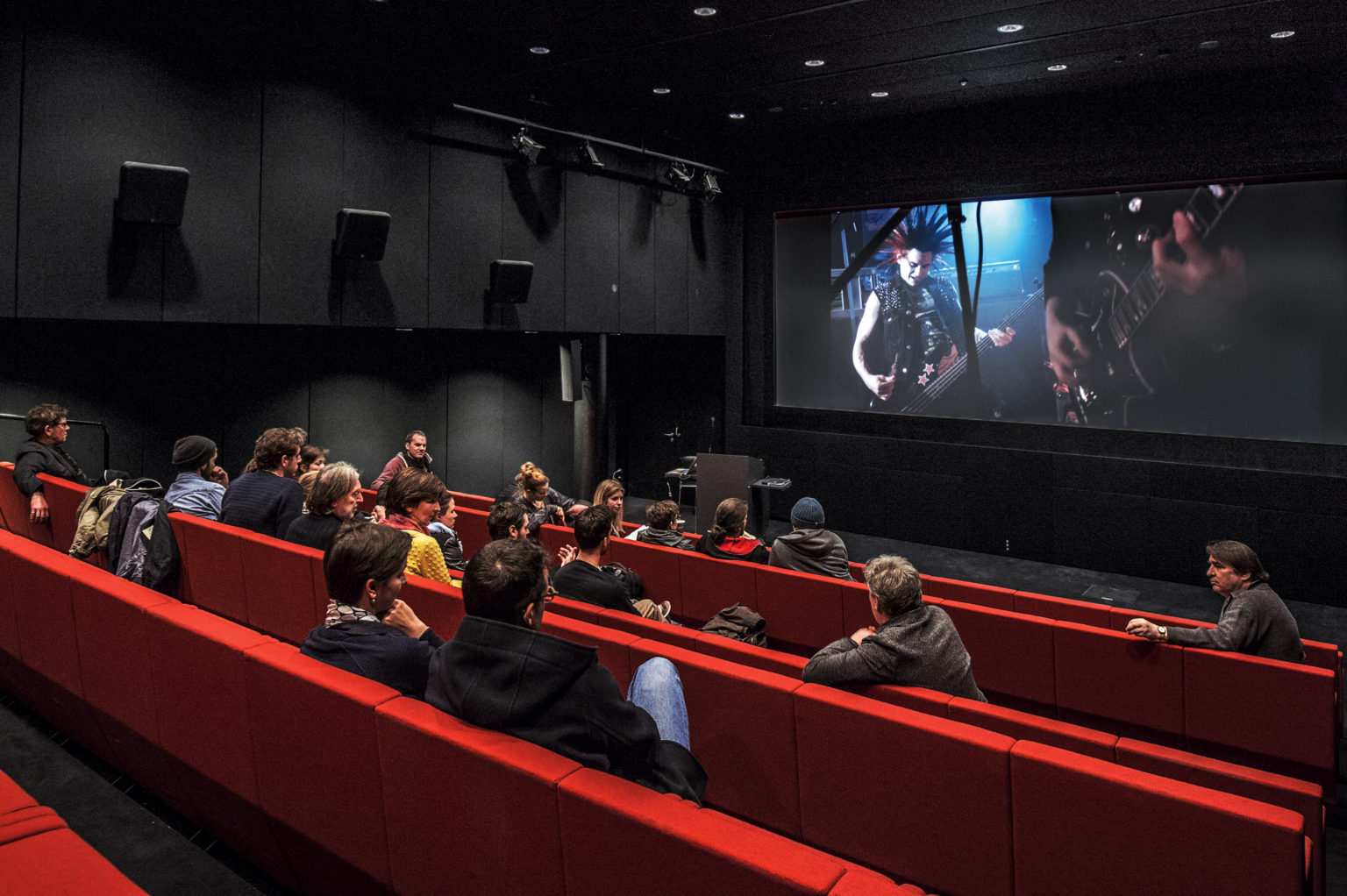

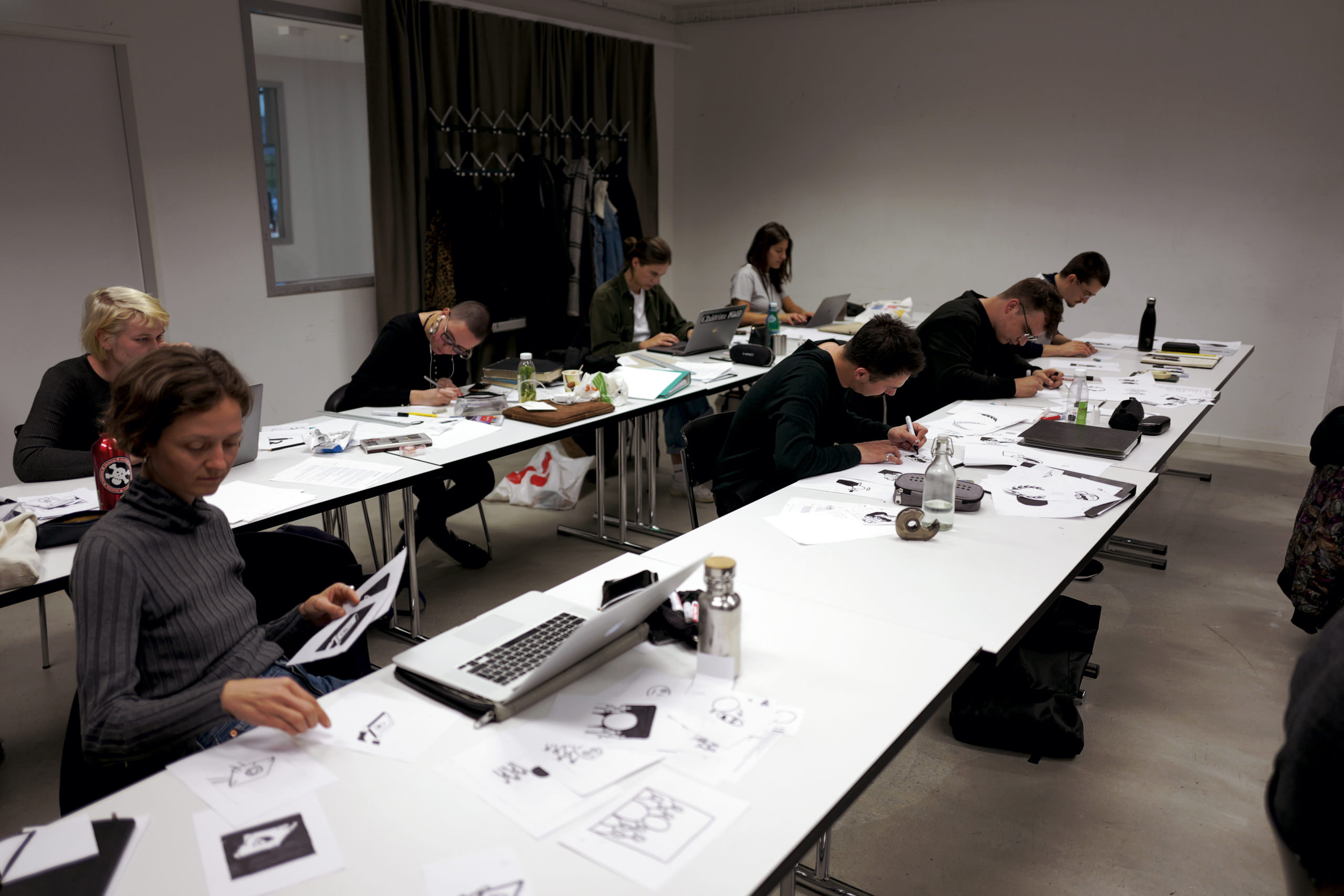
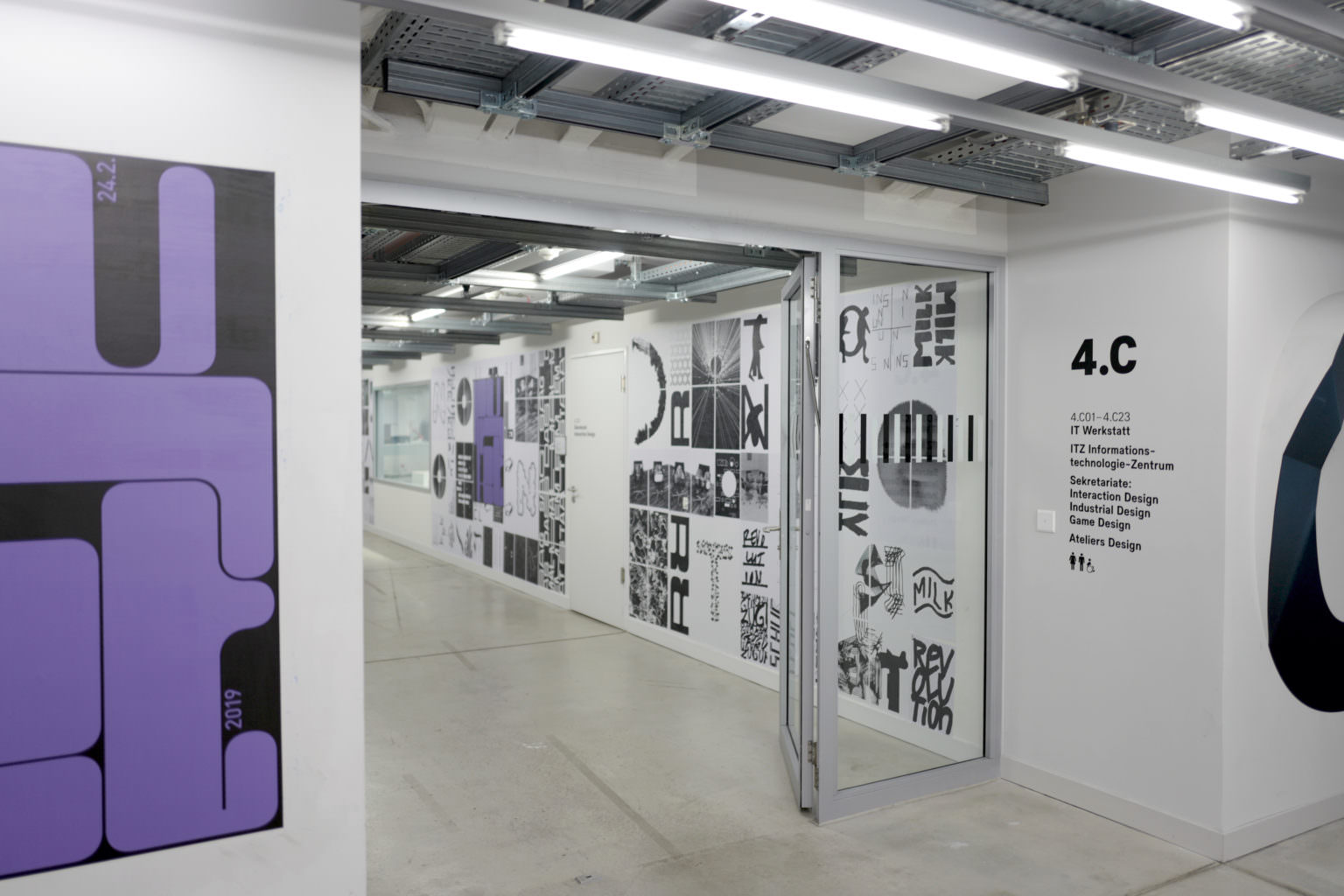
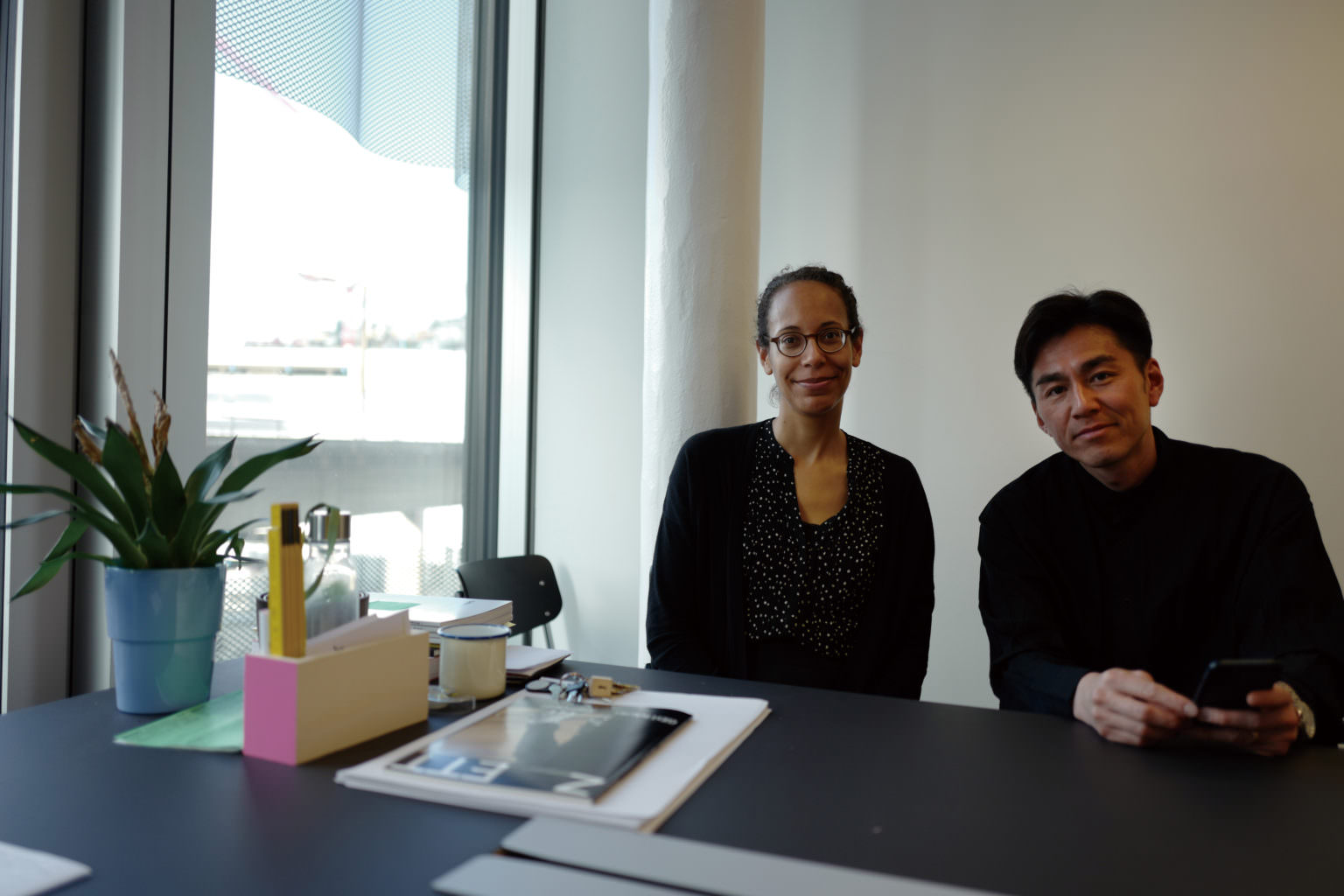
学内視察の際に学生のプレゼンテーションを見せていただき、それぞれの学生にクリエイティヴな発想や現実的なアウトプットの質の高さ、そしてプレゼンテーション能力の高さを感じ驚きました。学生がプロジェクトを進めていくにあたりどのようなことを大事にしていますか?
I was surprised to see the students’ presentation, which was highly skilled during my campus tour. Their ideas were very creative and the quality of their output is sophisticated. What is the most important thing in the process of approving student projects?
大学側は技能や審美的なスキルの発展をサポートしていますが、学生が継続的に自分の立ち位置と職業としてのデザインを紐付けて考えるプロセスも重要視しています。後者にはデザインの捉え方に変化を付けること、職業としてデザイナーになることの意味を自問することを学ぶ姿勢も含まれています。当校の学生は、グラフィックデザインが世界的に競争の激しい分野であり、過去30年間のうちにデジタルによる大変革が起き、新しい基準や価値が作り出されたことを理解しています。同時に、デジタルテクノロジーによって、いわゆる「専門知識のないデザイナー」がグラフィックの成果物を制作することをますます可能にしてきました。そのため、グラフィックデザイナーは自分の専門分野と知識をより明確に再定義していく必要があります。また、教授陣は、学生が選んだアイデアやメディアを十分に掘り下げ、作品を提示する斬新な形態について考えるように促しています。
We support the development of technical and esthetic skills on one hand, but also emphasize that students continuously reflect their position within and in relation to the design profession. This includes learning to deal with differing design perspectives and also asking oneself what it means to be a professional designer. Our students are aware that graphic design is a globally competitive field that has in the past 30 years undergone a digital revolution, creating new norms and values. At the same time, this technology has increasingly enabled so-called “non-designers” to create graphic artefacts. Therefore, graphic designers have had to redefine their expertise and make their knowledge more explicit. We encourage our students to fully explore their ideas and the media they choose, and ask them to think about innovative forms of presenting and thinking about their work.
学生のプロジェクトの中には、実際にグローバルクライアントと協働し実現されるプロジェクトも含まれています。このような協業はどのように生まれているのでしょうか?
Some student projects include collaboration with global clients. How does this happen?
学部課程と修士課程のカリキュラムには国内外の企業、組織、他大学との協同プロジェクトが含まれています。こうした協同プロジェクトは、講師陣が発端となります。講師の多くは教える傍ら、自分のデザインスタジオを経営していたり、エージェンシーで働いたりしていますので。こうしたプロジェクトを通して、学生は複合的な問題に取り組み、実社会での帰結に触れています。クライアントにとって学生の新鮮なデザインアイデアは貴重ですし、学生には学ぶ経験となり、実務につくプロフェッショナルとのコネクションを得て、自分の作品をより広く披露できるという恩恵があります。
The BA and MA curriculum includes cooperation projects with national and international companies, organizations and other universities. These cooperation projects are initiated by the lecturers, many of whom own design studios or work in agencies as well as teaching. Through these projects, students have the possibility to work on complex problems with real-world consequences. The clients appreciate the freshness of the design ideas, and the students profit from the learning experience, the professional contacts and the much wider reach and exposure of their work.
現在も未来も、子どもの教育、教育全体において、創造性を重視すべきでしょうか?
Do you think that the education of children, or pedagogy, both today and in the future, should concern itself with creativity?
間違いなくそう思います。小さい子どもは、世界がどう作用するかについて、非常に興味深く、楽しいアイデアに富んでいます。子どもが生み出す物事の関連性は大人にとって思いがけないものが多く、非常に創造性に満ちています。子どもは身近な物事を観察し、結論を導き出すことで実験を行います。多くの学校では、たとえば、芸術や音楽などの分野での創造性を求め、数学や地理などの分野ではそうでなくても良い、というように子どもたちがクリエイティヴであるべき領域を人為的に分けています。子どもたち当人はと言えば、こうした区分に困惑するかもしれません。というのも、こうした他の分野においてもイノベーションや新しい開発のためには、慣習にとらわれないクリエイティヴな考え方を必要とするからです。教育者だけではなく、もっと一般の人にも、創造性は多くの形態になり得るし、誰でも創造的になれるという認識が広まることを望んでいます。
Definitely. Young children have really interesting and often delightful ideas about how the world works. The associations they make between things are often surprising and highly creative, and they work empirically, relying on close observation and deduction. The creative aspect is unfortunately often lost in formal schooling, where the focus lies on learning facts and giving correct answers: the children are told how to see the world. Also in many schools there is an artificial separation between areas in which children are allowed to be creative, such as arts and music, and areas in which they aren’t, such as mathematics or geography. For children, this can be a confusing message, since innovations and new developments in all of these fields require unconventional and creative thinking. I would like to see more awareness — not only amongst educators, but more generally — that creativity can take many forms and that anyone can be creative.
現在のデザインの役割は何だと思いますか? また、未来ではどうなると思いますか?
What do think of the role of design now? And what will it be in the future?
デザインの役割は明らかに変化しており、まさに現在はその真っ最中だと思います。グラフィックデザイナーが「見た目を良くする」だけで、プロジェクトの最終局面にだけ意見を求められるという前提に必死に抵抗するという、非常に明確な変化を目の当たりにしています。デザイナーは自分が関わっている題材や分野だけでなく、自分の知識やスキルセットも拡張し続けています。他分野に食い込みつつあり、たとえば、デザイナー兼プログラマー、デザイナー兼人類学者、デザイナー兼コミュニティオーガナイザーというようになってきました。これは未来において増加する傾向だと思います。なぜなら、私たちが取り組むべき多くの課題は非常に複合的で、2つ以上の学問分野の視点を必要としているからです。未来のデザインの役割は、未来の発展に繋がるリスクと可能性を提示かつ生み出すことによって、新しい観点を結び付け、集め、扱いやすくし、そして提案する影響力として作用する側面が強くなるかもしれません。デザイナーになるには非常に刺激的な時代ですね。
インタヴュー:サラ・オーウェンズ(教授)
The role of design is clearly changing and we are currently in the middle of it. I see a pronounced difference in that graphic designers more forcefully resist the assumption that they only make things “look nice” and should only be consulted in the final phase of a project. Designers have been expanding not only the topics or areas they engage with, but also their knowledge and skill set. They are crossing into other fields and become, for instance, designers/programmers, designers/anthropologists or designers/community organizers. This will increase in the future, as we recognize that many problems we wish to tackle are highly complex and require more than one disciplinary perspective. The future role of design may then be that it acts increasingly as a force that connects, convenes or facilitates, and provides new viewpoints by showing and making experienceable risks and possibilities connected with future developments — a prospect that makes now a very inspiring time to be a designer.
Interview: Sarah Owens, Professor
Work
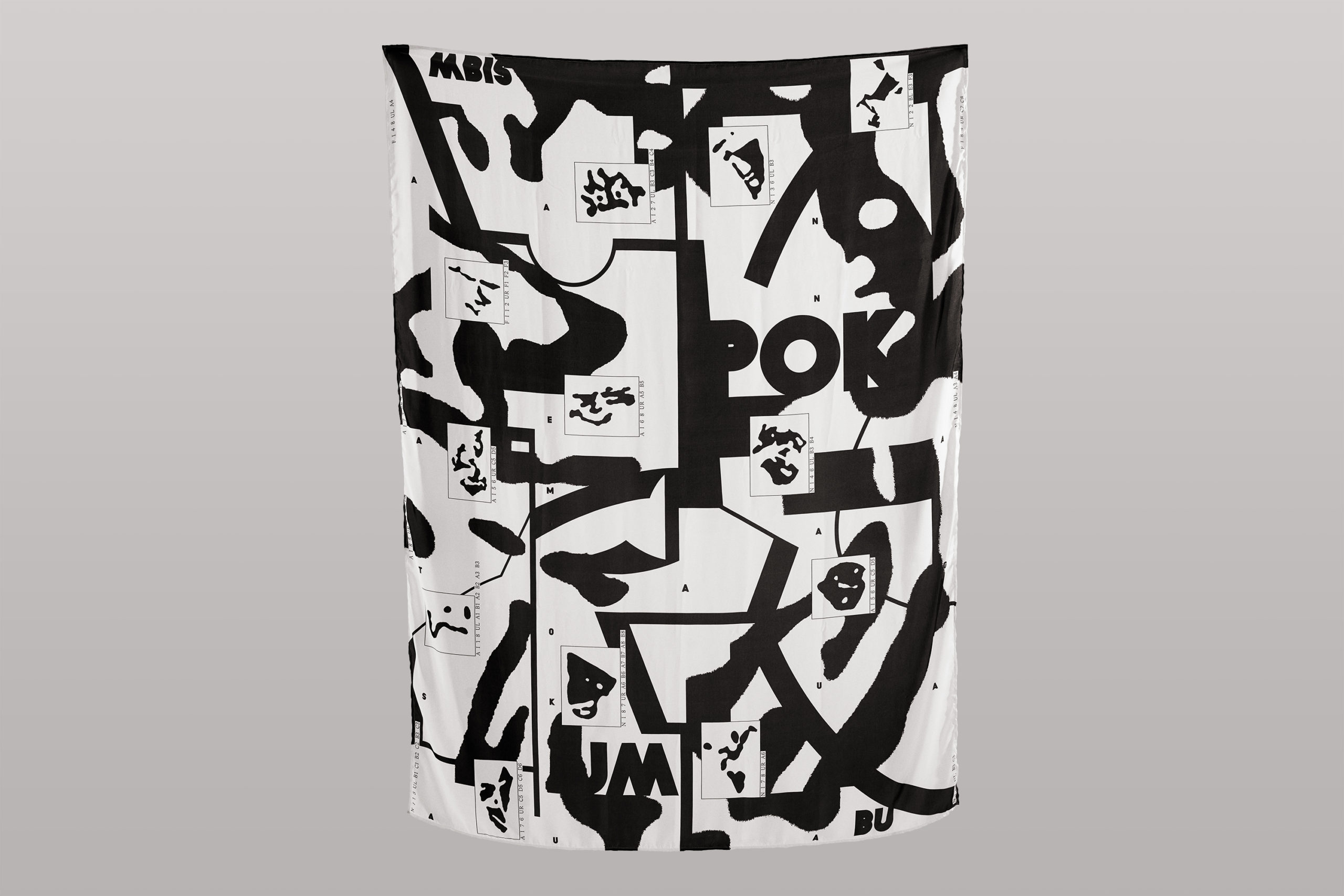


Through the Mask
Through the Mask
Aurelia Peter, 2019
Aurelia Peter, 2019
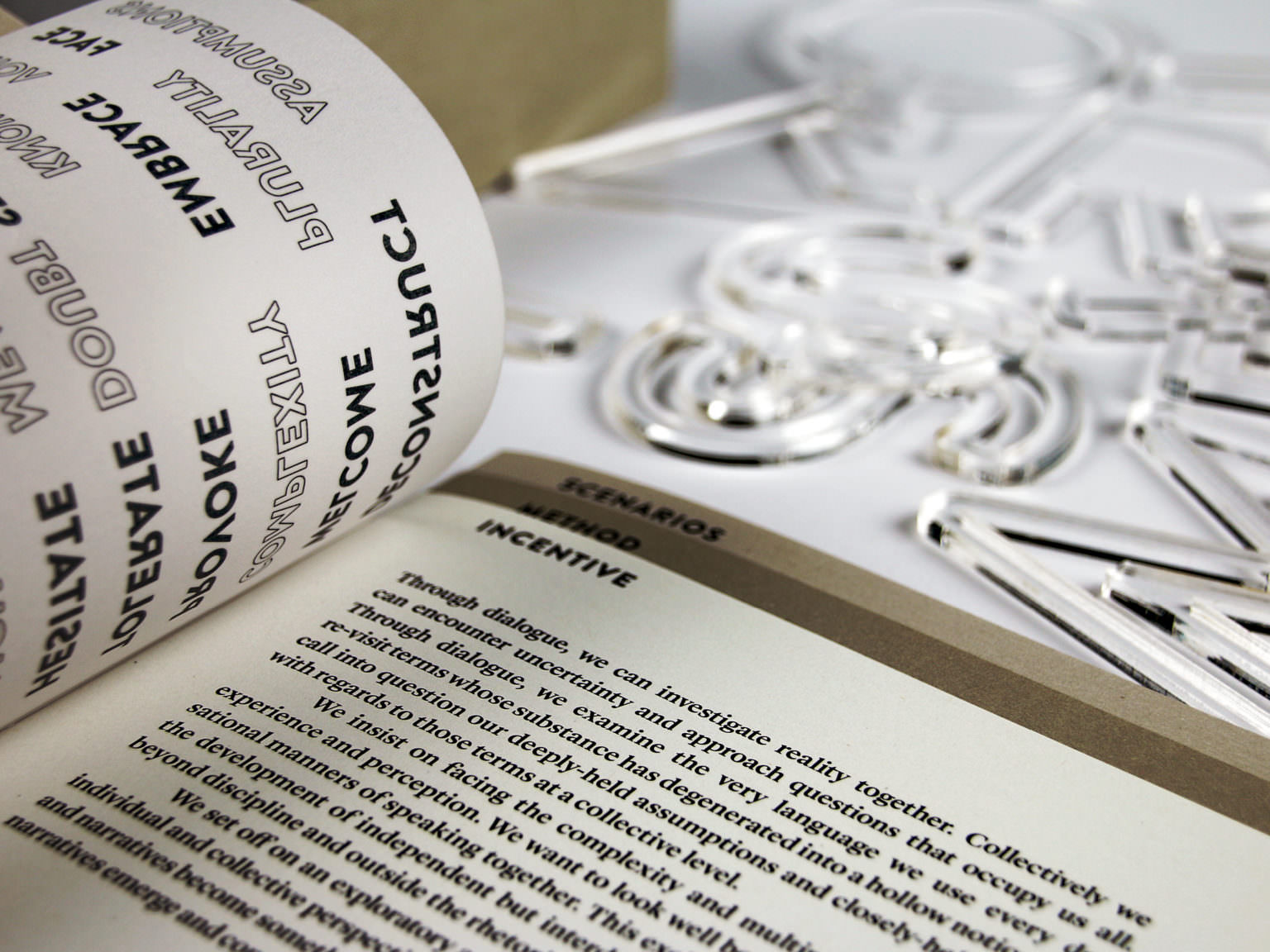
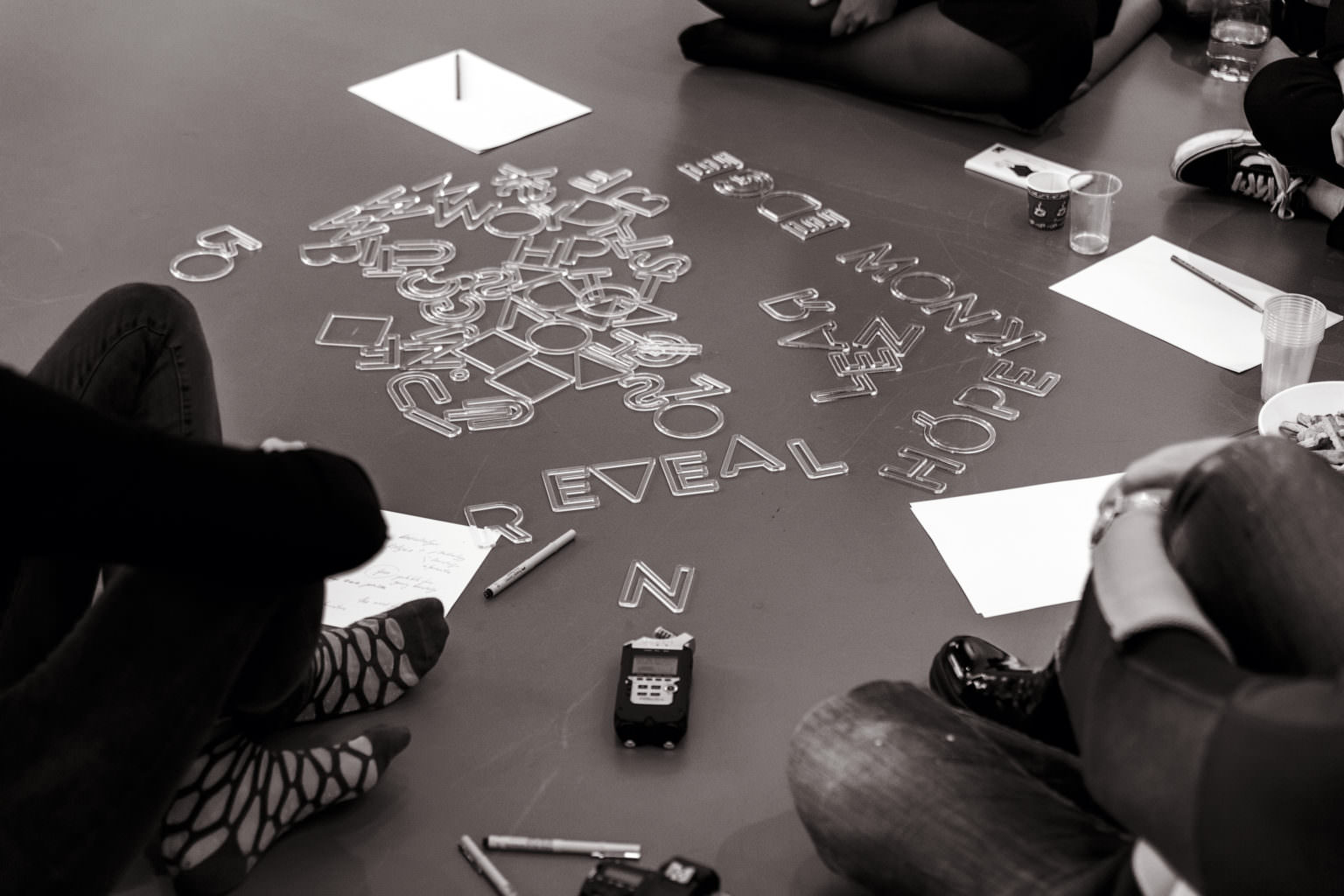
Towards Discursive Scenarios: Exploring Language, Meaning and Communication Through Design
Towards Discursive Scenarios: Exploring Language, Meaning and Communication Through Design
Miriam Hempel, 2019
Miriam Hempel, 2019
